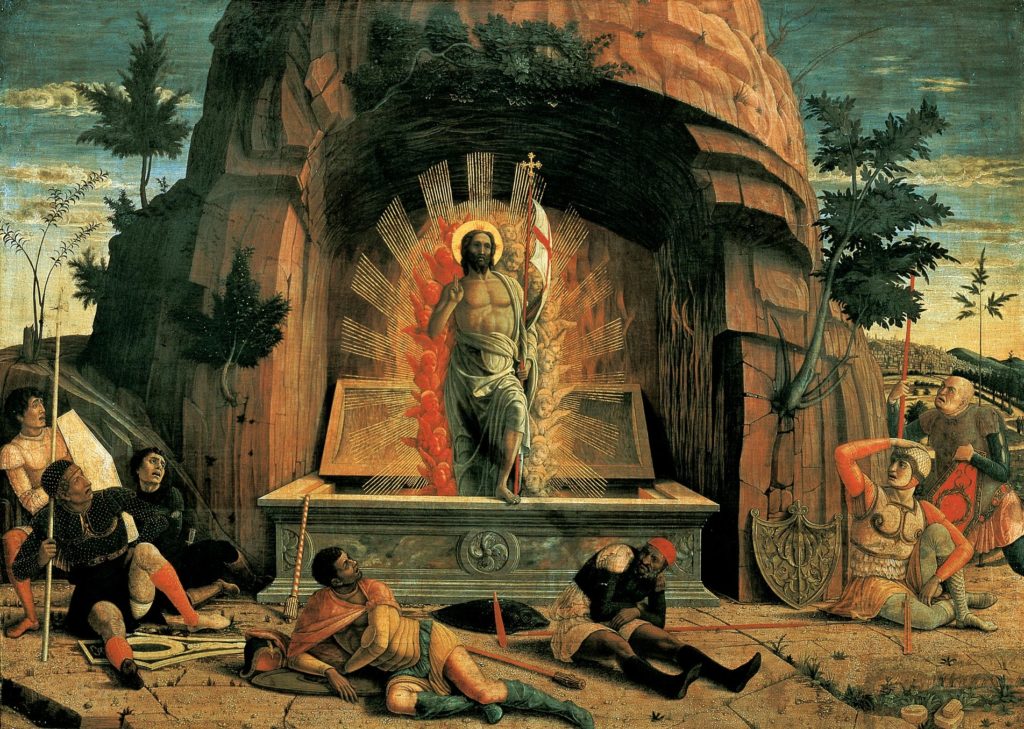He might not be as famous as Michelangelo or Leonardo. But Andrea Mantegna was just as talented and relevant for Italian art.

Andrea Mantegna lived in the 15th century. He was a master of perspective, no doubt.
The life of Andrea Mantegna
His talent was obvious, since he was young. He started by training and studying with Francesco Squarcione, an artist himself. In the workshop in Padua, Mantegna learned classical art and he fully developed his skills. So much so that there are lawsuit records. In fact, Squarcione tried to steal his ideas. He was sued for copyright issues.
Mantegna left his mark on Padua. He created the frescoes of the Ovetari chapel, although they got lost during the allied bombings in 1944. Still, other Paduan works have survived. Like the Polittico di San Luca (in the Pinacoteca di Brera, Milan) and the beautiful Saint Sebastian in Vienna.
Later, the artist left Padua and travelled through Italy. He also reached Mantova, where he worked for the Gonzaga family. That’s where he created his famous Camera degli Sposi, in the city’s castle. In 1488, he completed frescoes for Pope Innocence III. But he didn’t like Rome. In fact, Mantegna felt bridled by the demands of the Holy See. All in all, Mantegna wasn’t particularly inspired by the city.
The last years
His last creative period was characterised by an even more dramatic use of light and chiaro-scuro. Mantegna died in 1506 in Mantova, striving to survive. He faced economical difficulties because the world of art had almost forgotten about him.
Mantegna was a very introvert man. Still, he was an inspiration for later generations. Today, his work is in prestigious museums of the world, including the Prado and the Louvre.
Mantegna: perfect perspective
Andrea Mantegna was one of the first artists to fully understand the importance of perspective in painting. Of course, he wasn’t the only artist to use perspective. Bramante, a contemporary of Mantegna, also successfully used it and so did Leonardo, Correggio, Paolo Veronese.
Mantegna was, however, the one who modernized it and set the standards for artists after him. Notable examples of his own use of perspective are the already mentioned Camera degli Sposi, in Mantova, but also his iconic Cristo Morto. The tell tale characteristic of Mantegna’s perspective remains his penchant to paint as if looking at the subject from beneath. The technique was already used by Masaccio, but Mantegna experimented so much with it to become its best known representative.
Mantegna’s creativity and techniques influenced other great artists of the Renaissance, like Giovanni Bellini and Leonardo da Vinci.




























